


Our Clinic is a multispeciality clinic where we do all types of maxillofacial surgical cases like Impacted wisdom tooth removal, Apicoectomies,
Removal of cysts and tumors, Treatment of maxillofacial trauma, Maxillofacial Implants, reduction of fractures and orthognathic surgeries are also performed by oral surgeon,Oral surgeon, Endodontist & Prosthodontist.
SURGICAL PROCEDURES
Treatments may be performed on the craniomaxillofacial complex: mouth, nose, jaws, neck & face- Oral and dentoalveolar surgery (removal of impacted and buried teeth, cysts etc.).
- Preprosthetic surgery (bone augmentation).
- Dental implant surgery and associated bone grafting (to replace missing teeth or stabilize dentures; rehabilitation of patients having undergone surgery for tumours, to retain facial prostheses.
- Orthognathic surgery (dentofacial deformities).
- Facial trauma surgery (facial bone fractures and related soft tissue injuries).
Reconstructive surgery of the face.
- Cleft lip and palate surgery.
- Congenital craniofacial deformities.
- Facial plastic surgery (rhinoplasty, rhytidectomy, blepharoplasty, facial implants, etc.).
- Tempromandibular Joint Disorder (TMD).
- Snoring and sleep apnea correction surgery.
- Tumour/Cancer surgery.
- Orthognathic Surgery.
- Surgical extraction of impacted teeth
Wisdom Teeth
Wisdom teeth or third molars, are the final teeth to develop. Most of us have four wisdom teeth, one in each corner of the mouth. They usually emerge during our late teens or early twenties.Angular, bony impaction of third molar (wisdom tooth).
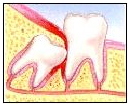
Often times, wisdom teeth become trapped or impacted in the jawbone, or simply fail to erupt. This can cause crowding or displacement of other teeth, or lead to the development of localized tooth decay, infection, or gum disease. Impacted wisdom teeth are set in the jawbone in unusual positions, sometimes horizontally, which stops them from erupting in a normal way.
Soft tissue impaction of third molar (wisdom tooth).
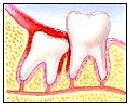
In most cases, it is recommended that impacted wisdom teeth should be extracted. Depending on the position of the tooth, third molar or wisdom tooth removal can be performed in dentist's office.
Typical Procedure
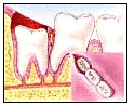
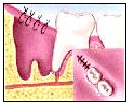
Incision is made and overlying bone is removed, exposing crown of impacted tooth.
Tooth is extracted as whole or surgically sectioned and removed in pieces. The site is sutured and closed.
To ease any discomfort and promote healing:
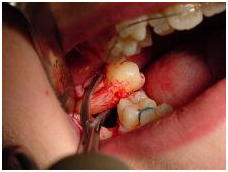
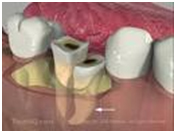
- Use ice packs on the cheek for swelling, alternating on and off every thirty minutes.
- Apply biting pressure with clean gauze to stop bleeding.
- Eat soft foods and drink extra liquids.
- Avoid hard or crunchy foods in the tender area.
- Brush carefully the day after surgery.
- Take prescribed medications and follow all instructions as directed.
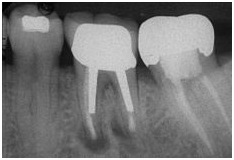
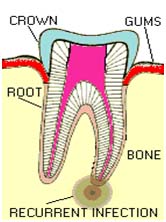
This is usually necessitated when inspite of a conventional root canal therapy there develops a periapical pathology. Even though a re-treatment is planned, removal of apical part of the infected tooth becomes a necessity. State of the art procedures make use of microsurgical techniques, such as micro instruments, ultrasonic preparation tips and calcium-silicate based filling materials.
Temporomandibular Joint Disorder
Term covering acute or chronic inflammation of the temporomandibular joint, which connects the mandible to the skull. The disorder and resultant dysfunction can result in significant pain and impairment. Because the disorder transcends the boundaries between several health-care disciplines in particular, dentistry and neurolog there are a variety of treatment approaches. The temporomandibular joint is susceptible to many of the conditions that affect other joints in the body, including ankylosis, arthritis, trauma, dislocations, developmental anomalies, and neoplasia. Signs and symptoms of temporomandibular joint disorder vary in their presentation and can be very complex, but are often simple. On average the symptoms will involve more than one of the numerous TMJ components: muscles, nerves, tendons, ligaments, bones, connective tissue, and the teeth. Ear pain associated with the swelling of proximal tissue is a symptom of temporomandibular joint disorder. Symptoms associated with TMJ disorders may be- Biting or chewing difficulty or discomfort
- Clicking, popping, or grating sound when opening or closing the mouth
- Dull, aching pain in the face
- Earache (particularly in the morning)
- Headache (particularly in the morning)
- Hearing loss
- Migraine (particularly in the morning)
- Jaw pain or tenderness of the jaw
- Reduced ability to open or close the mouth
- Tinnitus
- Neck and shoulder pain
- Dizziness
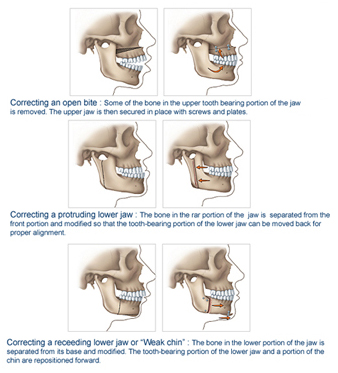
Maxillofacial Dental Implants :
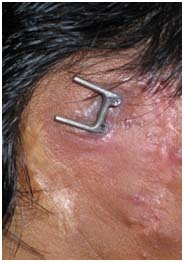

A dental implant is a "root" device, usually made of titanium, used in dentistry to support restorations that resemble a tooth or group of teeth to replace missing teeth.
Virtually all dental implants placed today are root-form endosseous implants, i.e., they appear similar to an actual tooth root (and thus possess a "root-form") and are placed within the bone (endo- being the Greek prefix for "in" and osseous referring to "bone"). The bone of the jaw accepts and osseointegrates with the titanium post. Osseointegration refers to the fusion of the implant surface with the surrounding bone. Dental implants will fuse.
with bone, however they lack the periodontal ligament, so they will feel slightly different than natural teeth during chewing.
Prior to the advent of root-form endosseous implants, most implants were either blade endosseous implants, in that the shape of the metal piece placed within the bone resembled a flat blade, or subperiosteal implants, in which a framework was constructed to lie upon and was attached with screws to the exposed bone of the jaws.
Dental implants can be used to support a number of dental prostheses, including crowns, implant-supported bridges or dentures. They can also be used as anchorage for orthodontic tooth movement. The use of dental implants permits undirectional tooth movement without reciprocal action.
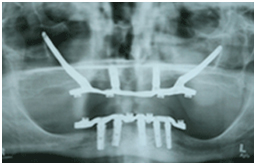
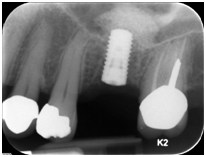
ORTHOGNATHIC SURGERY:
Orthognathic Surgery: These procedures are done along with orthodontic treatment (Braces). It is done to correct open bite, protruding lower jaw, or to correct retruded/receded chin. Distraction Osteogenesis is also performed to correct narrow jaws by expansion in upper or lower jaw.INDICATION:
Gross jaw discrepancies (Anteroposterior , Vertical and /or Transverse discrepancies).- Facial skeletal discrepancies associated with documented sleep apnea, airway defects, and soft tissue discrepancies.
- Facial skeletal discrepancies associated with documented temporomandibular joint pathology.
CLEFT LIP AND PALATE:
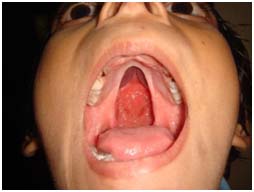
Cleft lip (cheiloschisis) and cleft palate (palatoschisis), which can also occur together as:
cleft lip and palate, are variations of a type of clefting congenital deformity caused by abnormal facial development during gestation. A cleft is a fissure or opening a gap. It is the non-fusion of the body's natural structures that form before birth. Approximately 1 in 700 children born have a cleft lip and/or a cleft palate. An older term is harelip, based on the similarity to the cleft in the lip of a hare.
Clefts can also affect other parts of the face, such as the eyes, ears, nose, cheeks, and forehead. In 1976, Paul Tessier described fifteen lines of cleft. Most of these craniofacial clefts are even more rare and are frequently described as Tessier clefts using the numerical locator devised by Tessier.
A cleft lip or palate can be successfully treated with surgery, especially so if conducted soon after birth or in early childhood.
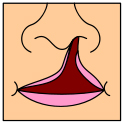 Unilateral incomplete
Unilateral incomplete
 Unilateral complete
Unilateral complete
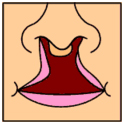 Bilateral complete
Bilateral complete
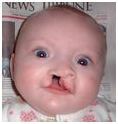 Pre-operation
Pre-operation
 After-operation
After-operation




